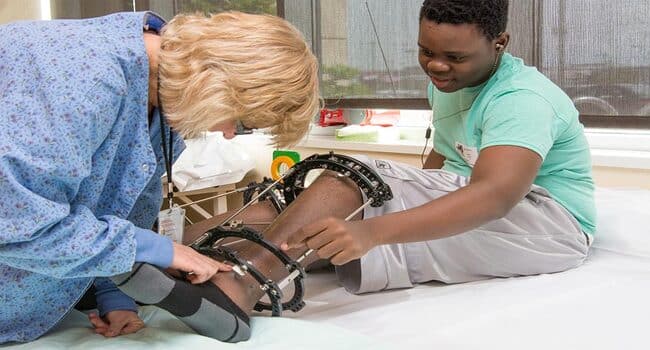Limb lengthening surgery has undergone remarkable innovations in recent years, offering new hope and possibilities for individuals with limb length discrepancies or those seeking stature enhancement. This transformative field has witnessed advancements in surgical techniques, technology, and patient care, revolutionizing how limb-lengthening procedures are performed and improving outcomes for patients worldwide.
Introduction To Limb Length Discrepancy
Limb length discrepancy (LLD) is a condition where one limb is shorter than the other, leading to functional limitations, gait abnormalities, and in some cases, psychological distress. Causes of LLD can vary, including congenital conditions, growth plate injuries, infections, and other musculoskeletal disorders. Traditionally, treatments for LLD included shoe lifts, orthotics, or invasive surgical procedures such as limb shortening or lengthening.
Evolution of Limb Lengthening Surgery
Historically, limb lengthening procedures were primarily performed using external fixation devices, such as the Ilizarov apparatus, which involved the gradual distraction of bone segments over weeks to months. While effective, these methods had drawbacks, including prolonged treatment duration, risk of pin site infections, and patient discomfort.
Introduction of Internal Lengthening Devices
In recent years, the introduction of internal lengthening devices (ILDs) has revolutionized limb lengthening surgery. ILDs are implantable devices that allow for controlled bone lengthening internally, reducing the need for external fixation and providing several advantages over traditional methods.
Advantages of Internal Lengthening Devices
Internal lengthening devices offer numerous benefits for patients undergoing limb lengthening surgery. Firstly, they minimize the risk of pin site infections and soft tissue complications associated with external fixation. Since the device is implanted within the bone, patients experience improved comfort and mobility during the lengthening process. Additionally, ILDs typically allow for faster rehabilitation and return to normal activities compared to external fixators, leading to shorter overall treatment times and improved patient satisfaction.
Patient-Centric Approach
A patient-centered method, which focuses on personalized treatment plans and care, is another important new development in limb lengthening surgery. Orthopedic surgeons collaborate closely with patients to determine the most suitable treatment options based on their specific needs, lifestyle, and goals. This approach emphasizes shared decision-making and ensures that patients are actively involved in their treatment journey from start to finish.
Minimally Invasive Techniques
Advancements in surgical techniques have also contributed to the evolution of limb lengthening surgery. Minimally invasive methods, like endoscopic procedures and percutaneous osteotomies, have become more common because they can get the job done with smaller cuts, less damage to soft tissues, and faster recovery times. These techniques minimize surgical morbidity and scarring while maximizing functional outcomes for patients.
Biomechanical Considerations
Biomechanical research plays a crucial role in optimizing limb lengthening procedures and implant design. Orthopedic engineers and researchers utilize computational modeling, finite element analysis, and cadaveric studies to understand the mechanical behavior of bones under lengthening forces and assess the performance of internal lengthening devices. This interdisciplinary approach facilitates the development of safer, more efficient surgical techniques and implants, ultimately improving patient outcomes.
Future Directions
The future of limb lengthening surgery holds promise for continued innovation and advancement. Ongoing research in regenerative medicine, tissue engineering, and gene therapy may offer alternative approaches to bone regeneration and limb lengthening. Additionally, the integration of robotics, augmented reality, and artificial intelligence into surgical practice may further enhance precision, efficiency, and safety in limb lengthening procedures.
The Limbplastx Institute is at the forefront of incorporating cutting-edge internal lengthening devices into their limb lengthening surgeries, ensuring patients receive the most advanced and effective treatment options available.
Conclusion
Innovations in limb lengthening surgery have transformed the landscape of orthopedic care, offering new opportunities for patients with limb length discrepancies to achieve improved function, mobility, and quality of life. From the introduction of internal lengthening devices to the adoption of patient-centric approaches and minimally invasive techniques, the field continues to evolve rapidly, driven by a commitment to innovation, research, and excellence in patient care. As technology advances and our understanding of biomechanics and tissue engineering deepens, the future holds exciting possibilities for further enhancing the outcomes and experiences of patients undergoing limb lengthening surgery.
